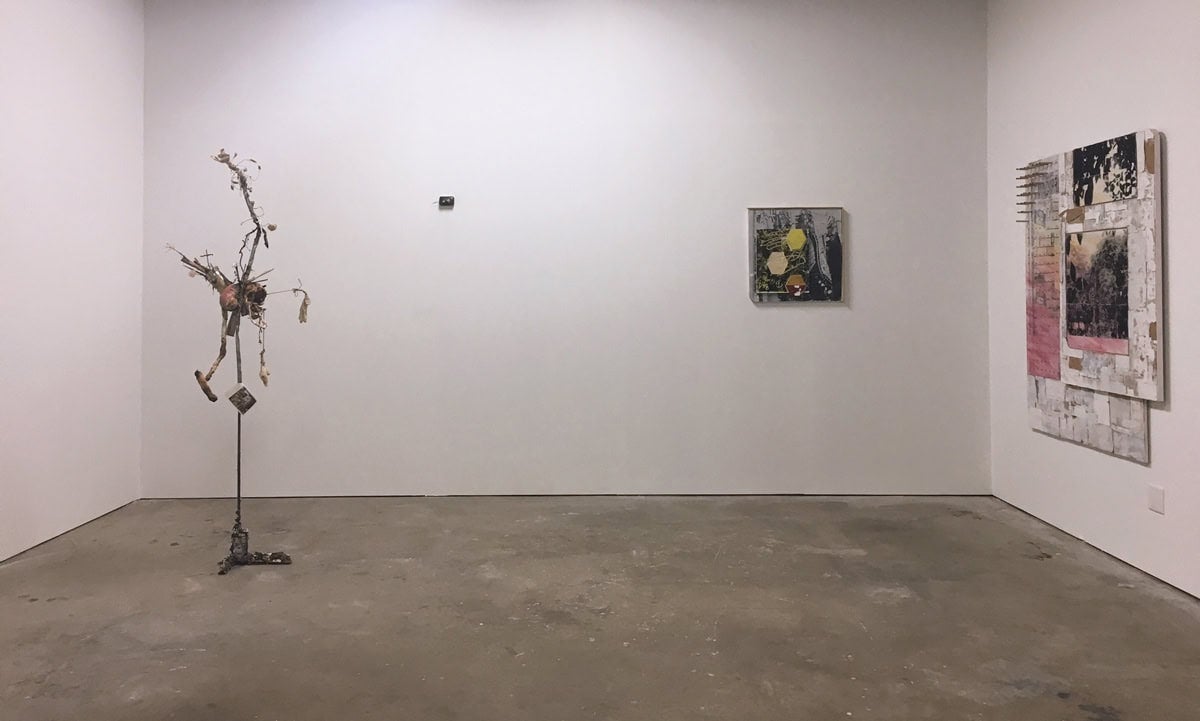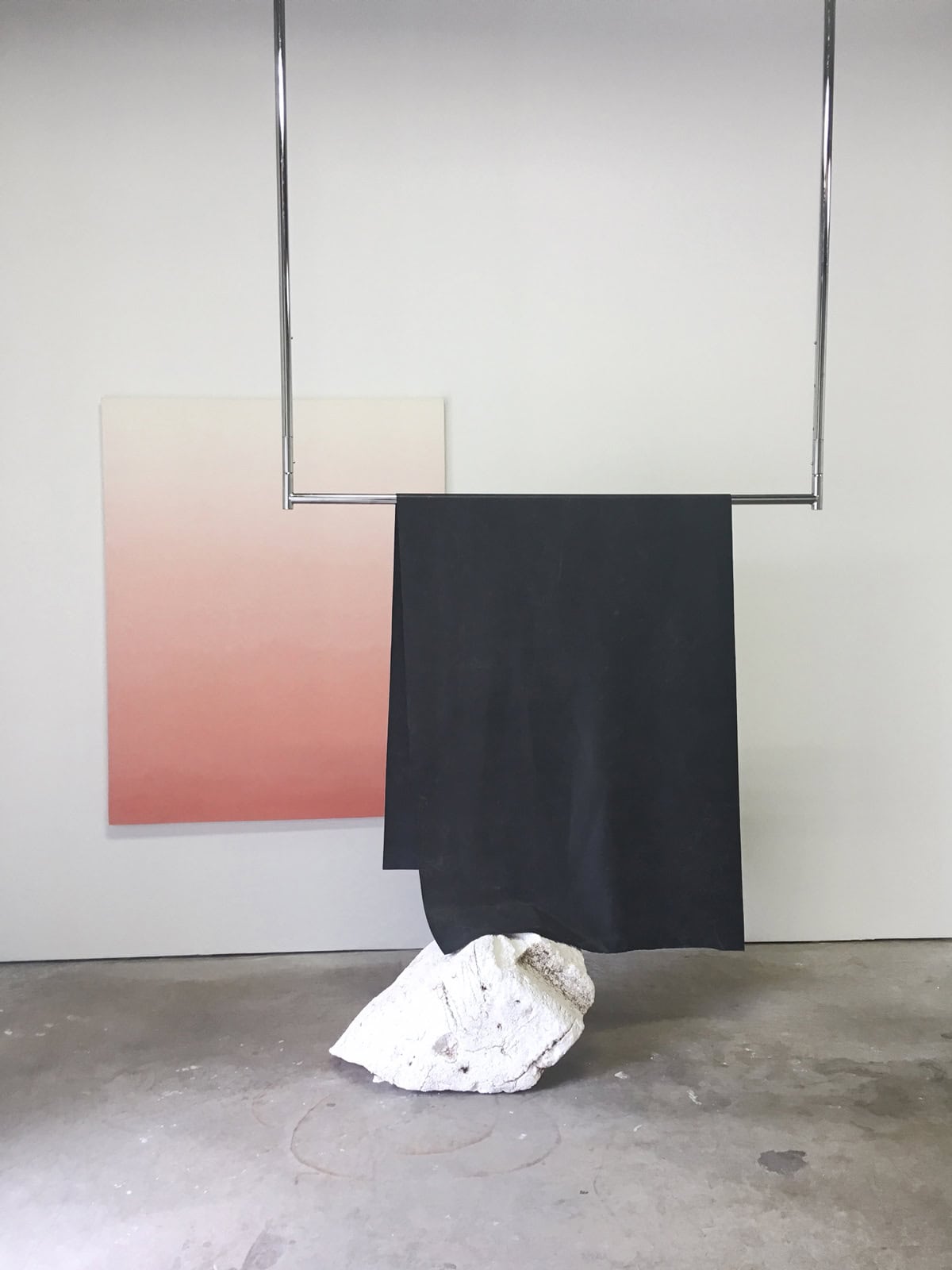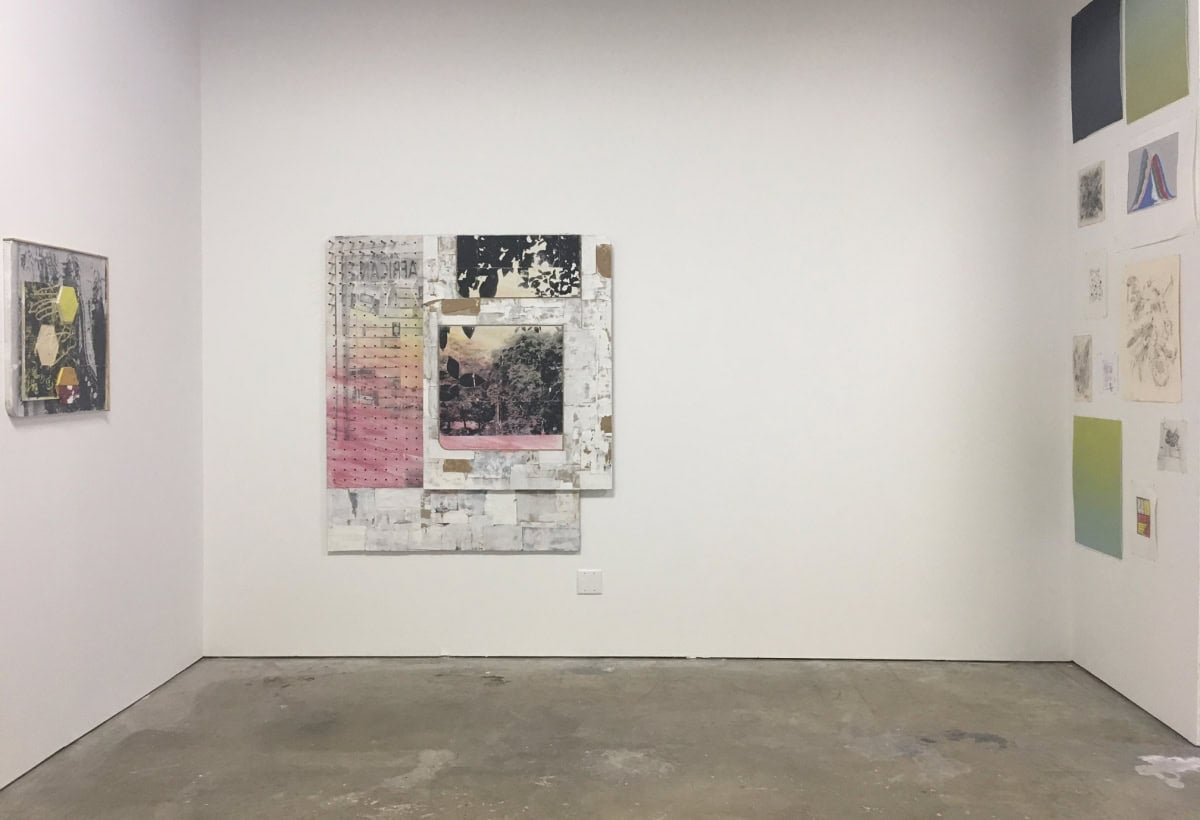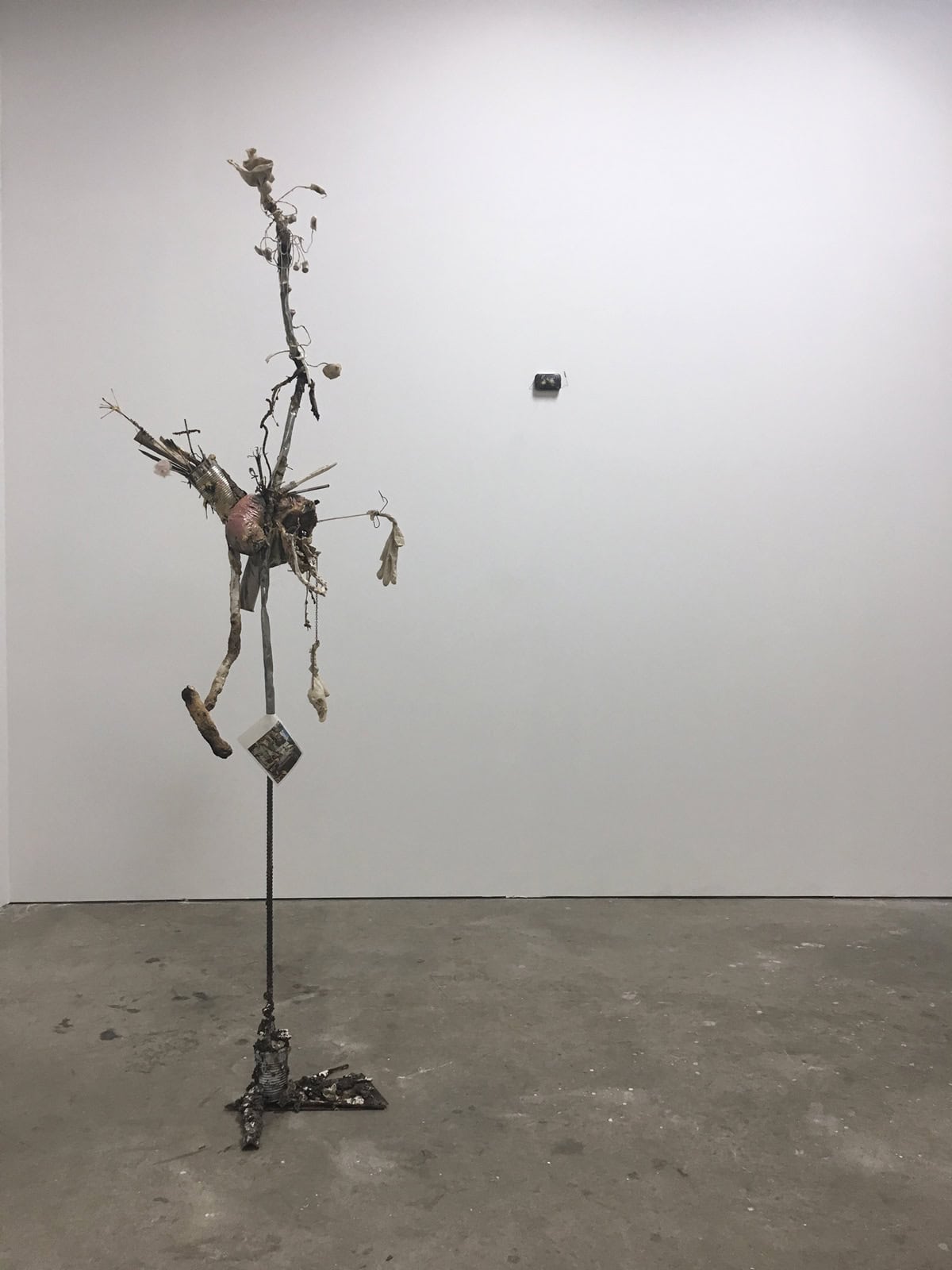
Curated by artist couple and frequent collaborators Candice Greathouse and Curtis Ames, the exhibition “Parallel Play” presents new work by three Atlanta-based artists—Kojo Griffin, Andrew Boatright and Kirstin Mitchell—at the Finishing School, a new gallery space on the campus of the University of Georgia in Athens. Formerly a storage unit, the Finishing School now boasts fresh drywall and paint and occupies an intimate space measuring roughly 20 by 25 square feet.
“Parallel play” is a term in childhood development studies referring to the stage when children begin to engage in solitary play, together. For the exhibition, three corners of the gallery spotlight new works by each artist, while a fourth wall displays sketches from all three together.

Griffin’s pieces Nurture/Nature and The Cooked and The Cooked feature photo emulsion transfers on multiple layered panels, each hinting both in title and appearance at the failures of dichotomous thinking. In The Cooked and The Cooked, meandering lines are carved into the wood, crossing through three hexagons: one made of unfinished wood, one halved into crimson and orange, and one painted neon yellow. Nurture/Nature juxtaposes grayscale images of trees and leaves with a wash of sunset pink and the word AFRICAN printed backwards, as if in a mirror, complicating impressions of place and history against a whitewashed backdrop. Featuring a triangular arrangement of pegs inserted in holes on its left panel, the composition of Nurture/Nature recalls a homemade board game, but its cues and objective are unclear.

Boatright’s figural sculptures mix the gruesome and the ecstatic, blending religious phrases and imagery into contorted, fleshlike assemblages. Chatter Box (the children’s teeth are set on edge) references a biblical warning against false proverbs. The incessant chattering of a tiny motorized Altoids tin covered in hair, wire and polyurethane adhesive fills the space with an anxious, foreboding racket. Golgotha suggests an exhausted but advancing figure made of twisted muscle, frozen in the act of pushing forward with a dogged, but possibly joyful, persistence. A postcard of Bellini’s St. Francis in the Desert dangles from the sculpture, invoking an art historical depiction of religious ecstasy.
In a departure from her performance pieces, such as last year’s Tropic of Gemini, Kirstin Mitchell offers the installation At Play in the Fields of the Lords, which situates three different focal points into a kinetically charged tableau. An acrylic coral gradient on canvas (field) hangs facing a rubber mat draped over chrome bars extended from the ceiling (play), with the edge of the mat just touching a chunk of weathered dock foam (lord). At Play in the Fields of the Lords provides a glimpse into what Mitchell refers to as a “choose-your-own-adventure story”: a mutable arrangement of objects signifying the artist at work, or rather, at play. The resulting installation is possibly the most gestural work in the show, yet the abstracted bodily presence provides a stimulating contrast with the nearby toiling physicality of Boatright’s Golgotha. The multipart composition also has a surprising kinship with Griffin’s Nurture/Nature, both pieces recalling invented games with undetermined rules.

Drawing its name somewhat ironically from traditional finishing schools, which prepared women for marriage by training them in docile, “ladylike” arts, the Finishing School is directed by Mike Calway-Fagen, a sculpture professor at UGA. Inspired by the DIY legacy of artist-run spaces, Calway-Fagen hopes the nascent gallery will promote what he calls “creative problem-making” more than commodified or academic output. The ethos of the space challenges the career-oriented dominance of MFA programs, which, like women’s finishing schools, are understood as places to acquire a standard set of skills in pursuit of future success. “The first question I ask my students,” Calway-Fagen says, “is ‘how do you make a living?’ And I’m not talking about a paycheck.”
“Parallel Play” is a reminder of the necessity of play in making a living, and of living in general. The group of sketches on display together show each artist’s individual creative impulses unfolding, while the realized installations serve as stand-ins for the three artists together in conversation. It is perhaps this sharing, this interplay of different visions and perspectives, that proves the most valuable aspect of art school, whatever form it takes.
“Parallel Play” was on view at the Finishing School March 1 – March 29. The next exhibition, curated by Nashville collective Mild Climate, opens tomorrow, March 31, from 6 to 9 pm, and will remain on view through April 16.




